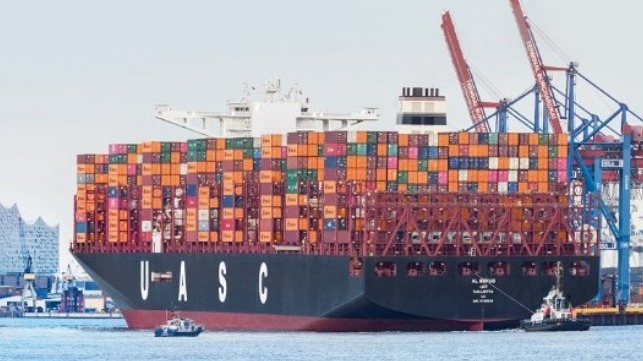Hapag-Lloyd Doubles Order to 12 Ultra-Large LNG Boxships

Six months after placing its first order for six ultra-large containerships, Hapag-Lloyd has picked up its option expanding the order with six more boxships, which will be among the largest in the world. Hapag now has on order 12 containerships each with a capacity of over 23,500 TEU, which represents nearly 15 percent of the company’s current 1.7 million TEU total transport capacity. The new vessels will be deployed on the line’s Europe-Far East routes, representing a significant boost to Hapag-Lloyd's capacity in this trade.
"With this investment in the additional newbuildings, we want to take another step in the ongoing modernization of our fleet - in terms of both ship size and sustainability," says Rolf Habben Jansen, CEO of Hapag-Lloyd. "At the same time, we want to meet the persistently high demand and reduce our slot costs."
Hapag-Lloyd ordered the six ultra-large containerships from South Korea’s Daewoo Shipbuilding & Marine Engineering. Deliveries for these vessels are due to begin in 2024 following the prior sextet which is due for delivery in 2023. DSME in a corporate filing valued the new order at $1 billion similiar to reports for the price of the first six vessels ordered in 2020.
As with the first order, the new ships will be outfitted with a state-of-the-art high-pressure dual-fuel engine which Hapag noted would make them extremely fuel-efficient. Their engines will operate on LNG, but the vessels will also have sufficient tank capacity to operate on conventional fuel as an alternative. The carrier’s strategy is focusing on liquefied natural gas as a medium-term solution to achieve reductions in CO2 and sulfur dioxide emissions. Hapag believes that fossil LNG is currently the most promising fuel on the path towards zero emissions. Its medium-term goal is to have ships that operate in a climate-neutral way using synthetic natural gas.
The six additional ships have been financed with an $852 million syndicated green loan that has a maturity of 12 years from the date of delivery. The transaction was concluded following the Green Loan Principles of the Loan Market Association while being verified by DNV, which acted as the independent expert rendering the secondary party opinion required in this loan structure. Green loans link the terms of the financing to the company’s achieving measurable goals for improving the environmental performance of its operations. The credit facility is being backed by the Korea Trade Insurance Corporation (K-SURE), and the syndicate consists of 10 banks.
